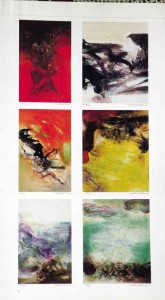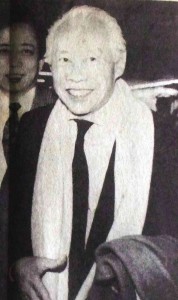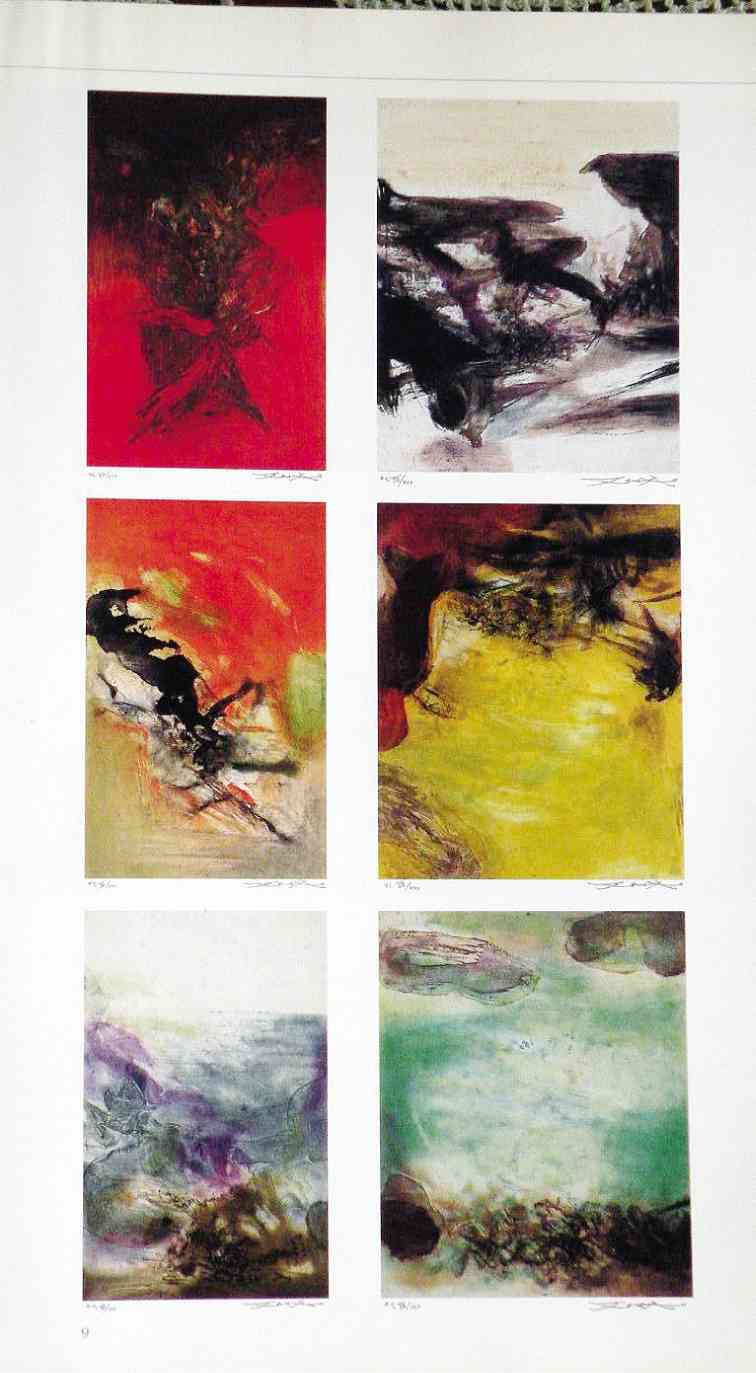
Zao Wou-ki, a name familiar especially to art collectors who competed in bidding for his prized paintings at major auctions, passed away in Switzerland on April 9. The modern art master, who was acclaimed in his adopted homeland of France, was 93.
Viewing a retrospective painting exhibition of Zao Wou-ki was virtually going over his diary. That was what I discovered back in February 1993, or 20 years ago. The artist visiting Taipei at that time himself said that his paintings were like entries in his diary.
“When I feel good and happy,” pointed out the then 72-year-old Zao, “it shows in my work. But there are times when my anxiety finds expression on my canvases. Occasionally my paintings reflect a violent streak. But lately I have mellowed down. My recent works tend to be calm.”
The then still active and Paris-based Zao Wou-ki, considered for many years the most important living Chinese artist in the West, admitted that his emotional life always had an effect on his paintings. He married thrice.
A son from a previous marriage was reported to have fought a legal battle with his third wife over the guardianship of the artist. This was when Zao moved to Switzerland in 2011.
“I was very unfortunate in my emotional life,” he explained. “My turbulent experiences were not of my own choice. I looked at the turn of events as my fate. In my first marriage, my wife walked out on me. My second wife passed away at the age of 41.”
Each relationship lasted between 15 and 20 years, he reckoned. The woman in his life at the time of the interview and until his death was French.
Limited output
Love was a powerful force that kept the Chinese artist going. At least he could say he was not lonely. There was always a woman in his life.
Zao said his creative output was limited. He did only 4-12 paintings a year. His works at the time of the interview were enormous in size. When compared to his output that time, his early paintings were of miniature size.
“I paint every day,” he said then. “I start at 9:30 a.m. and continue until 6 p.m. Whether the result of my effort is good or bad is another matter.”
His atelier tucked away in Paris looked impressive. It had an elevator of its own. His actual working space had a very high ceiling. The roof had a window to let ample natural light in during the day.

Zao liked working while bathed in daylight. When evening shadows fell, he had difficulty seeing clearly.
“I can’t seem to find the right color at night,” the abstract painter and resident of France since 1948 remarked.
He studied at the Hangzhou Academy of the Arts in China before he moved to the West.
He also loved music, tuning in to Radio Classique regularly. While the music played, he painted on his canvas.
Looking back at his personal experience, he noted: “Abstract art expresses feelings and emotions better.”
He added: “I never give titles to my paintings. I don’t want to restrict the human imagination.”
Zao’s works expressed color, light and shadow as understood in Western art while embracing the finest elements of the Yuan and Sung dynasties’ landscape paintings.
His painting fetched a bid of 45.5 million Hong Kong dollars (US$5.89 million) at an auction in Hong Kong in 2009. On another occasion, an abstract 1968 painting drew a bid of 68.98 million Hong Kong dollars (US$8.8 million).
Discovering Klee
Zao Wou-ki’s retrospective exhibitions before his Taipei show in February 1993 received a lot of attention. But the one-man show in Taiwan’s capital until then was his most extensive one. It covered his painting career from 1935-1992.
In the past, he was very reluctant to bring out the works done in his youth. He got convinced to do it for the Taiwan public.
By 2008, no less than the Galerie Nationale du Jeu de Paume presented Zao in a major retrospective show.
Zao was born to an old patrician family in Beijing in 1921. He learned to appreciate beauty early in life. His banker father devoted his leisure time to painting. But it was his grandfather who first taught him painting and calligraphy.
At age 14, Zao entered the Hangzhou Academy of Fine Arts, where he was a student of famous brushwork artist Lin Feng-mian.
Zao and his wife, Lan-lan, left Shanghai for Marseilles on Feb. 26, 1948. He eventually decided to set up residence in Paris.
While he was still in China, the artist already painted under the influences of Renoir, Matisse and Picasso. But once in Europe, he discovered Klee. In his lifetime, he counted artists like Alberto Giacometti and Joan Miro among his friends.
As a painter, he tried to combine Chinese painting techniques and Western art influences. In fact, he was to rediscover calligraphy on foreign soil more than 24 years after he put it behind him.
Zao held an art show at the National Museum of History in Taipei in 1983. In 1993, he was able to hang up his masterpieces at the Taipei Fine Arts Museum.
In his last years, he suffered from Alzheimer’s disease and stopped painting.









































